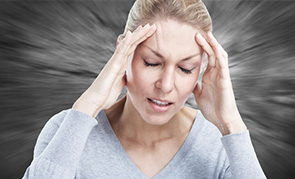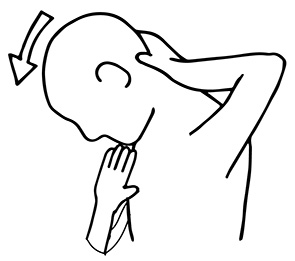
Headaches affect just about everyone at some point and they can present themselves in many different ways. The types of headaches Chiropractors see are; Tension, Jaw (TMJ), Cervicogenic headaches (originating in the neck) followed by Migraine headaches.
Tension Headache
Usually present as a generalised headache characterised as a dull tightness around the scalp. Tension headaches can affect concentration, mood and can cause nausea. The Jaw (TMJ) can also be involved which can be caused by clenching or grinding because of stress, jaw injury or misalignment.
Cervicogenic Headache
Typically one-sided intense non-throbbing headache that can cause nausea and vomiting if severe enough. It can feel like the pain is behind one eye ball. No visual disturbance or neurological signs. Usually involves pain and discomfort in the upper neck.
Migraine Headache
Usually an intense headache on one side that can involve nausea, vomiting and visual disturbances. Some migraines begin with visual disturbance like partial blind spots or squiggly lines in the visual field with the headache beginning after about 20 minutes. It has a throbbing pulsating nature. Due to its severity and the other symptoms the migraine patient cannot function and is usually bedridden.
Treatment
Your Chiropractor will perform a thorough neuro-musculoskeletal assessment of the neck and upper back, including: movement, posture, palpation, functional testing, strength testing and specific pain provocation tests to identify where exactly the headaches may be coming from and what is possibly causing them.
Patients with cervicogenic headache will often have altered neck posture or restricted cervical range of motion. The headache may be triggered or reproduced by active neck movement.
Many spinal related headaches will involve treatment via spinal adjustments and acupressure techniques. The region usually involved is the upper cervical region.
In tension related headaches the TMJ (Jaw Joint) is often involved due to stress. Stress management techniques will also be discussed.
With migraines there can also be dietary factors as well as hormone factors that will be addressed sometimes involving co-management with other health professionals.
Research
A report released in 2001 by researchers at the Duke University Evidence-Based Practice Center in Durham, NC, found that “spinal manipulation resulted in almost immediate improvement for those headaches that originate in the neck, and had significantly fewer side effects and longer-lasting relief of tension-type headache than commonly prescribed medications.” McCrory, Penzlen, Hasselblad, Gray (2001), Duke Evidence Report.
These findings support an earlier study published in the Journal of Manipulative and Physiological Therapeutics that found spinal manipulative therapy to be very effective for treating tension headaches. Boline et al. (1995), Journal of Manipulative and Physiological Therapeutics.
Stretch of the Month
Chin Tuck Stretch

This gentle stretch can help alleviate the aches associated with tight muscles around the neck and upper back. This can be done first thing in the morning, as well as during breaks at work to help minimise tightness and decrease the potential of tension related headaches.
Gently bend your head forwards with one hand whilst guiding your chin towards your chest with the other until you start to feel a stretch at the back of the neck.
Hold this position for 30 seconds and repeat a few times
Towards Wellness
Thought for Today Tomorrow…

Become aware of your thoughts. If you think negatively all the time, you are going to live in fear. This makes it impossible to ever live a happy life. The truth is our thoughts are our reality. This means that if you don’t want something as a reality in your life – stop thinking about it!

